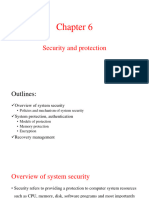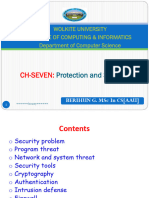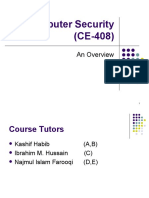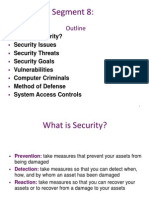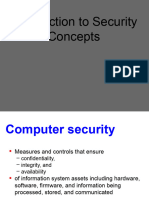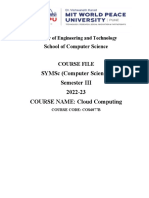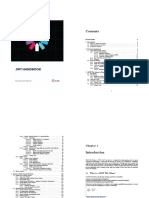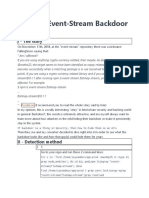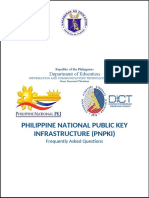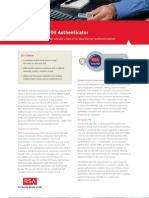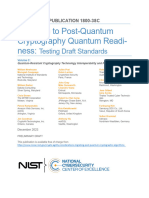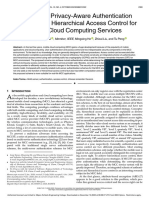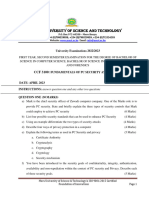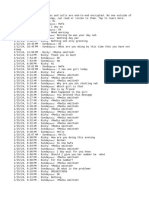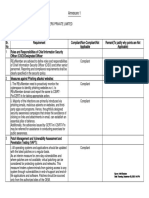0% found this document useful (0 votes)
22 views18 pagesChapter-8 Operating System Protection and Security
The document discusses the concepts of protection and security within operating systems, emphasizing the importance of user access control and authentication to safeguard system integrity. It outlines various security threats, including breaches of confidentiality, integrity, and availability, as well as methods attackers use to compromise systems. Additionally, it highlights cryptography as a vital tool for securing communications and user authentication methods, including passwords and biometrics.
Uploaded by
mahendrasuryavanshiCopyright
© © All Rights Reserved
We take content rights seriously. If you suspect this is your content, claim it here.
Available Formats
Download as PPTX, PDF, TXT or read online on Scribd
0% found this document useful (0 votes)
22 views18 pagesChapter-8 Operating System Protection and Security
The document discusses the concepts of protection and security within operating systems, emphasizing the importance of user access control and authentication to safeguard system integrity. It outlines various security threats, including breaches of confidentiality, integrity, and availability, as well as methods attackers use to compromise systems. Additionally, it highlights cryptography as a vital tool for securing communications and user authentication methods, including passwords and biometrics.
Uploaded by
mahendrasuryavanshiCopyright
© © All Rights Reserved
We take content rights seriously. If you suspect this is your content, claim it here.
Available Formats
Download as PPTX, PDF, TXT or read online on Scribd
/ 18


